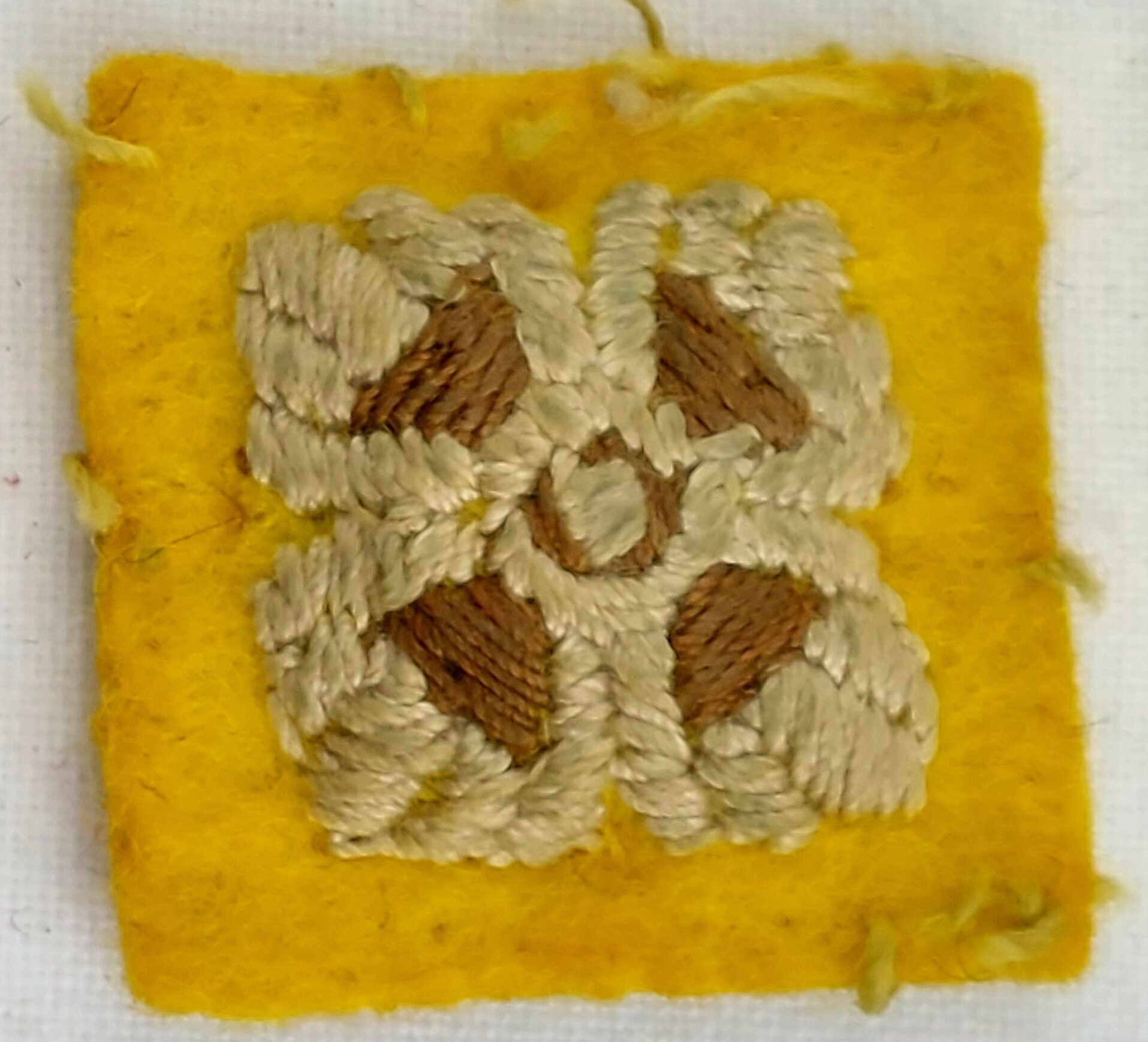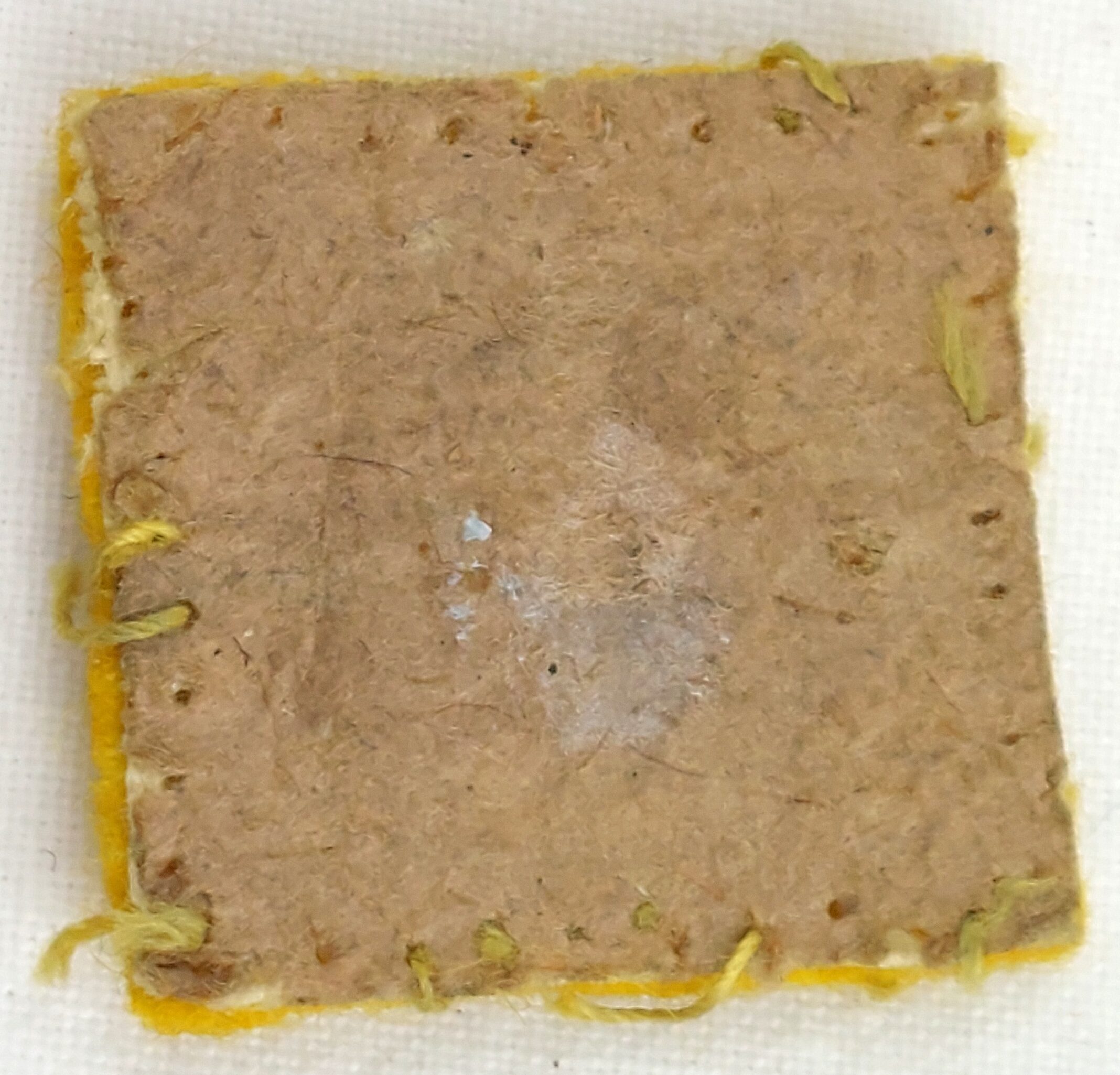*WW2, British Army Officers, Rank of 2nd Lieutenant, RAC, Cloth Insignia Pip*
Badges for field officers were first introduced in 1810. These badges consisted of (and still consist of) crowns and stars, (the latter being more likely to be called ‘pips’ today). The insignia was moved to the shoulder boards in 1880 for all officers in full dress, when the system of crowns and stars was reorganised on similar lines to that seen today.
1 pip – 2nd Lieutenant
2 pips – Lieutenant
3 pips – Captain
Crown – Major
1 pip & a crown – Lieutenant-Colonel
2 pips & a crown – Colonel
3 pips & a crown – Brigadier
1 pip & crossed sword + baton – Major-General
1 crown & crossed sword + baton – Lieutenant-General
1 crown, 1 pip & crossed sword + baton – General
The Royal Armoured Corps (RAC) as well as the Royal Army Service Corps and the Royal Army Pay Corps used yellow backing. Prior to World War II, officers’ rank badges had khaki backings. However, lessons learned from World War I revealed that these did not provide good visibility. Consequently, in September 1940, colored backings matching the arm of service colors were authorized. Officers who owned battle dress before September 18, 1940, had the option of having their khaki rank badges mounted on separate pieces of colored material at public expense. By December 1940, official patterns were established, featuring the design embroidered directly into a colored backing, allowing officers to acquire future requirements from military outfitters.
Approx 2.5cm x 2.5cm
*Condition*
In sound, used condition. Please see photographs as part of the condition report.
JAQDXG_2955139901



